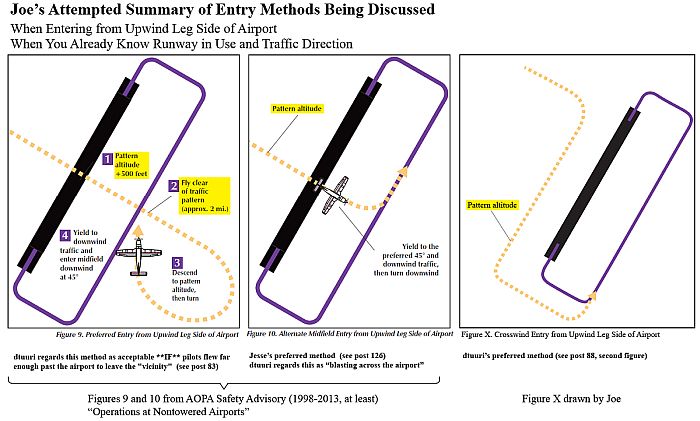There is absolutely nothing even slightly illegal about joining on a midfield crosswind. The only opposition I've ever seen to that are people that "prefer" to do it on the departure end of the runway versus midfield. I've never seen anyone ever suggest it wasn't a legal entry. It is a hell of a lot more standard than some of the things I've seen suggested in this thread.
When it comes to being picky a CAP ride is nothing like a CFI ride with our FSDO. I taught the inspector how to join the pattern on a midfield crosswind on my CFI ride and was the inspector's first and only candidate to pass on the first try.
Dtuuri's interpretation of this issue and the regulations, I assure you, is incompatible with 99.9% of the active pilots out there. Which is why I stated in the beginning I wasn't going to argue it with him, since I can't change his ability to interpret written word. That said, I'm saying something so that anyone reading this can realize he's absolutely not an expert on this subject and has a view that is contrary to the rest of the flying population.
For those that do interpret regulations like the rest of us (and the FAA), it's quite easy to look at part 91 and determine that the only regulatory requirement is the direction of the turn. If by chance you do run into some CAP guy who thinks like Dtuuri I would try to educate him and if he wouldn't listen would take it up the chain so they could correct the matter.
I'm not about to say this is a perfect science, and there are likely many exceptions, but from my time evaluating pilots the *ONLY* people I've ever seen do the teardrop entry are folks that are new and don't fly much.



